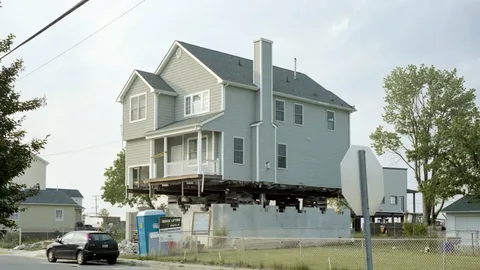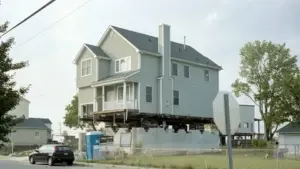
Comprehensive Home Insurance for Properties in Flood-Prone Areas
Homeowners in flood-prone areas face unique challenges when it comes to protecting their homes and personal belongings. The risk of flooding can result in extensive damage that is often expensive to repair. Home insurance for flood-prone areas is a critical consideration, as standard home insurance policies typically do not include flood coverage. It’s essential to understand how to secure adequate protection to safeguard your home against potential flood damage. In this article, we’ll explore the key aspects of home insurance for those living in high-risk flood zones and how to make the most informed decisions.
Understanding the Risks of Living in Flood-Prone Areas
Living in an area susceptible to floods means facing an elevated risk of property damage. Flooding can result from a variety of factors such as heavy rainfall, hurricanes, and storm surges. It’s crucial for homeowners to recognize the potential dangers, as flooding can severely damage the structure of a home, destroy personal belongings, and even lead to long-term health hazards like mold growth. Without appropriate insurance coverage, the financial burden of these damages can be overwhelming.
Does Standard Home Insurance Cover Flooding?
One common misconception is that standard home insurance policies include flood protection. Unfortunately, most basic homeowners insurance policies do not cover flood damage. This means that in the event of a flood, a homeowner may be responsible for all repair and replacement costs. Therefore, if you live in a flood-prone area, it’s essential to purchase separate flood insurance or seek a home insurance policy that includes flood coverage as an additional option.
Purchasing Flood Insurance: What to Know
For homeowners in flood-prone areas, flood insurance is often mandatory. The National Flood Insurance Program (NFIP), administered by FEMA, provides flood insurance policies for high-risk areas. However, homeowners can also choose to purchase flood insurance through private insurers, which may offer more comprehensive coverage or higher limits. It’s important to carefully evaluate different policy options and understand what each covers, as there may be differences between government-backed and private policies.
Coverage Offered by Flood Insurance
Flood insurance typically covers two primary aspects: the structure of your home and its contents. Structural coverage includes repairs to your home’s foundation, electrical and plumbing systems, walls, and floors. Personal property coverage protects your belongings, such as furniture, appliances, and electronics, from flood damage. When reviewing a policy, it’s important to know the limits of coverage for both structural and personal property damages. Some policies may offer more comprehensive coverage, while others may have stricter limits, especially when dealing with high-value items.
Determining Your Home’s Flood Risk
Knowing your home’s flood risk is essential when choosing the right insurance policy. FEMA provides Flood Insurance Rate Maps (FIRMs), which outline areas at risk for flooding based on historical data and environmental factors. Homes located in Special Flood Hazard Areas (SFHAs) are at higher risk and often require flood insurance. Even if your home is not located in a designated high-risk area, floods can still occur due to unexpected events or changes in weather patterns. It’s always a good idea to assess your risk and consider flood insurance, regardless of your home’s official designation.
Elevation Certificates and Flood Insurance Costs
The cost of flood insurance can vary depending on several factors, including your home’s location and flood risk. One important factor is the elevation of your home in relation to the base flood elevation (BFE) of your area. An elevation certificate provides documentation of your home’s elevation, which can help reduce your flood insurance premiums if your home is elevated above the BFE. Homeowners in flood-prone areas should consider obtaining an elevation certificate to potentially lower their insurance costs.
Steps to Lower Flood Insurance Premiums
While living in a flood-prone area can increase your insurance costs, there are steps you can take to potentially lower your premiums. Some strategies include elevating your home or its essential systems, installing flood vents, and using flood-resistant materials in construction or renovation projects. Additionally, maintaining an updated elevation certificate and making improvements to mitigate flood risk can help reduce insurance costs over time. Consult with your insurance provider to explore all available options for minimizing your premiums while maintaining adequate coverage.
What to Do After a Flood: Filing a Claim
If your home experiences flooding, it’s important to act quickly to file a claim with your insurance provider. Document the damage with photos and videos, and make a list of any belongings that were destroyed or damaged. Your insurance provider will send an adjuster to assess the extent of the damage. Be sure to keep receipts for any repairs or temporary accommodations, as these may be reimbursable under your policy. Understanding the process of filing a claim can help you recover faster and ensure you receive the compensation you deserve.
The Role of Government Assistance in Flood Recovery
In addition to flood insurance, homeowners in flood-prone areas may be eligible for government assistance programs during recovery. FEMA often provides disaster relief funding for homeowners affected by major floods, offering financial help for temporary housing, repairs, and other essentials. While this assistance can be helpful, it is often limited in scope and should not be seen as a substitute for comprehensive flood insurance. Having both insurance and knowledge of available government resources ensures that homeowners have multiple layers of protection during and after a flood event.
Preparing for Future Floods: Mitigation Tips
Proactively protecting your home from future flood damage is one of the best investments you can make. This includes sealing basement walls, installing sump pumps with backup power, and landscaping to direct water away from your home. Regularly maintaining gutters and drainage systems can also reduce the risk of flooding. By taking these steps, homeowners can not only reduce the likelihood of significant damage but may also be able to lower their flood insurance premiums. Flood mitigation measures show insurance companies that you are reducing your risk, which can lead to savings on your policy.
Conclusion
Home insurance for flood-prone areas is a necessity for homeowners who face the risk of flooding. With standard home insurance policies often lacking flood protection, it’s crucial to explore separate flood insurance policies or comprehensive plans that include this essential coverage. By understanding your home’s flood risk, purchasing the right insurance, and taking proactive measures to mitigate future damage, you can protect both your home and your financial stability. Flood insurance offers peace of mind, knowing that you are prepared for the unexpected and ready to recover swiftly in the event of a disaster.






